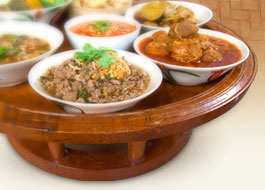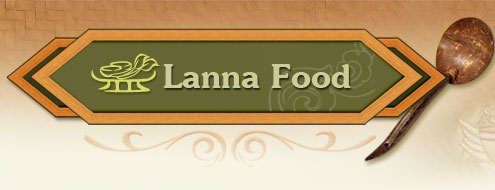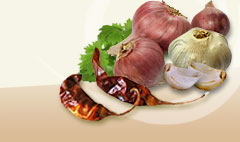Indian Spinach |
|
|
 | Basella Alba Linn. |
|
| |
 | Basellaceae |
|
| |
 | Indian spinach, Ceylon spinach, Malabar nightshade |
|
| |
 | Phak plang, phak plang yai (Central), phak plang (Northern), Poleng chai (Chinese) (Phennapha Sapcharoen and Kanchana Diwiset, editors, 1999, p. 129) |
|
| |
 | Annual or biennial climber. Stems slender, ramose angular, light green or purplish red (referred to as phak plang daeng). Leaves simple, alternate, acuminate, ovate, slightly undulating, fleshy, 2-6 cm. wide, 2.5-7.5 cm. long. Inflorescence of spikes, long pedunculate, star-like 5 petals, white. Fruit, ovoid or globose, glossy green dark and purple, fleshy; seeds round and brownish. (Agricultural Extension Department, 2007) |
|
| |
 |

100 gm. has 21 kilocalories, 93.5 gm. water, 2.7 gm carbohydrates, 2 gm. protein, 0.2 gm. fat, 0.8 gm. residue; 4 mg. calcium, 50 mg. phosphorus, 1.5 mg. iron, 9,316 IU Vitamin A, 0.07 mg Vitamin B1, 0.20 mg. Vitamin B2, 1.1 mg. niacin 26 mg. Vitamin C. Food: Leaves, shoots and young flowers are blanched and eaten with namphrik or made into a cho dish called cho phak plang. |

Pulverized and put on a wound as an anti-inflammatory, and treats itchiness, it is a tonic for general health and eyes. (Phak Phuen Ban Phak Ahan Phuen Mueang, 2007, p. 58) |
|
| |
 | All year round |
|
| |
 |
Agricultural Extension Department. (2007). Phak Phuen Ban . Retrieved 10 June2007from http://singburi.doae.go.th/acri (in thai). Kanchana Diwiset, et al., compilers. (2005). Phak Phuen Ban Phak Nuea. Phennapha Sapcharoen, editor. (2nd ed.). Nonthaburi: Center for Text Development on Traditional Thai Medicine. (in thai). . (1999). Phak Phuen Ban Phak Klang. Kanchana Diwiset, editor. Nonthaburi: Project on Development of Traditional Thai Medicine. (in thai). Phak Phuen Ban Ahan Phuen Mueang. (2007). Bangkok: Fa Aphai Co., Ltd. (in thai). Phennapha Sapcharoen and Kanchana Diwiset, editors. (1999). Mai Rim Rua: Samunphrai kap Wattanatham Thai. Part 2. Nonthaburi: Institute of Traditional Thai Medicine. (in thai). |
|
| |
|
|




